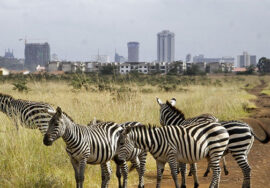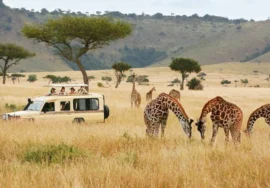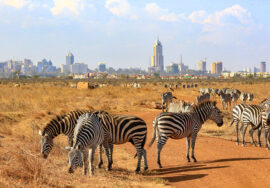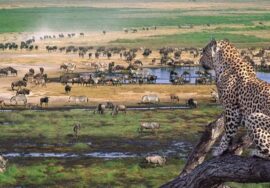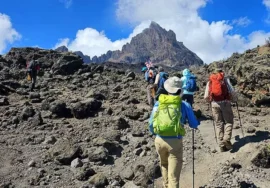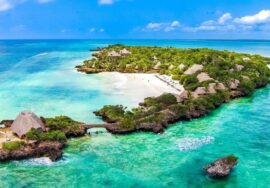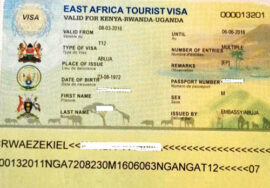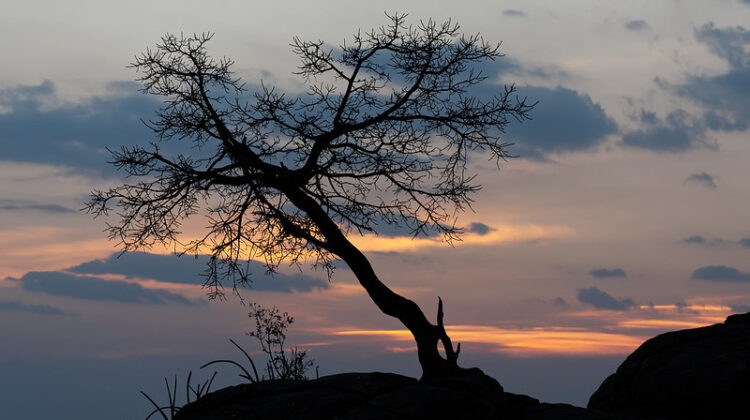
Olduvai Gorge – Secrets Revealed
Olduvai is the most important paleoanthropological site in the world. There you can see what our oldest stone tools looked like, like pebbles that had been chipped. On the other hand, more advanced tools, like the hand axe, have been found in sediment beds that are a million or two years newer.
If you go to the spot, you might be lucky enough to see a dig going on that is uncovering even more artifacts from the time of our ancestors.
A Quick Look at Olduvai Gorge
The Olduvai Gorge is in the eastern Serengeti Plains in Tanzania, which is in East Africa. The famous Ngorongoro Crater is about 45 kilometers (28 miles) away. It is in the Ngorongoro Conservation Area.
HOW FAR ARE THE BIGGEST PARKS IN TANZANIA?
About 45 kilometers away is the Ngorongoro Conservation Area.
Serengeti National Park is about 140 kilometers away.
About 100 kilometers from Lake Manyara National Park
Last but not least, Tarangire National Park is about 160 kilometers away.
Hot air balloon safari in the Masai Mara in Kenya Credits for Kenya Safaris photos Collection of governors4
How was Olduvai found?
The story of how Olduvai finally told its secrets goes back millions of years, but the gorge itself wasn’t found until the 1930s. This is when Mary and Richard Leakey, two young scientists, started digging at the spot to look for old artifacts. In the end, they did find some stone tools and the brain of an ape that lived 25 million years ago.
However, it wasn’t until 1959 that the Leakeys found pieces of an early human brain that were almost 2 million years old. This made news around the world. After this, hundreds of more bone pieces were found, making an almost complete human skull.
Even more amazing was the fact that the skull belonged to a type of person that had never been seen before. This was proof of our earliest ancestor and that people came from the woods, plains, and savannahs of Africa.
A Very Interesting Accounting
Two things make Olduvai very important: first, the huge number of artifacts that have been found in this ravine; and second, the way that nature has organized, kept, and finally shown these finds.
The site is made up of four layers, or beds. The beds at the bottom are usually the oldest. This has naturally made a record of what was found and how it was linked. For example, the bite marks on bones in the oldest beds show that we were already using tools before we made the first cuts. As we move up to the higher or more recent silt beds, we find tools that are more advanced.
This collection of artifacts is so full that scientists have found groups of tools and animal bones gathered together in one place. This shows that humans are becoming more social and want to work together as a society. And this shows that our early cognitive skills changed over time.
There is a lot to see and learn at this famous place, so it should be a part of any safari in northern Tanzania.
There are guided walks of the gorge and a large museum with interactive displays that show more about the amazing finds at Olduvai that have helped us learn more about early humans.
A stop at Olduvai is a great way to think about how humans have changed over time to live in the fields and woods of Africa, along with the animals that live there.

